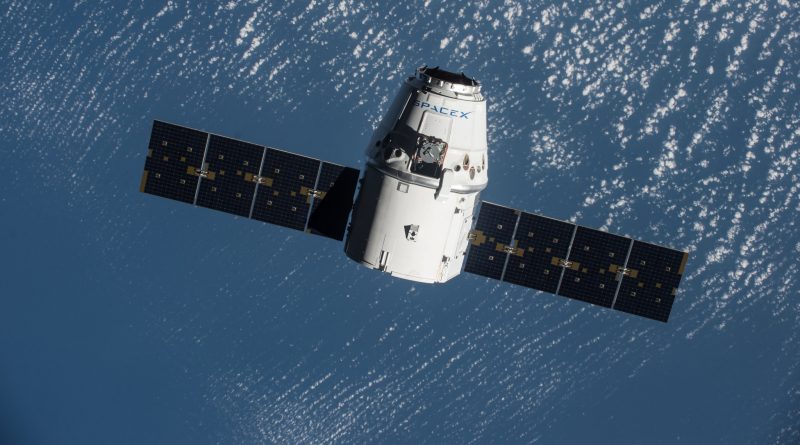Dragon Spacecraft to conclude ISS Cargo Delivery Mission with Splashdown Landing Friday
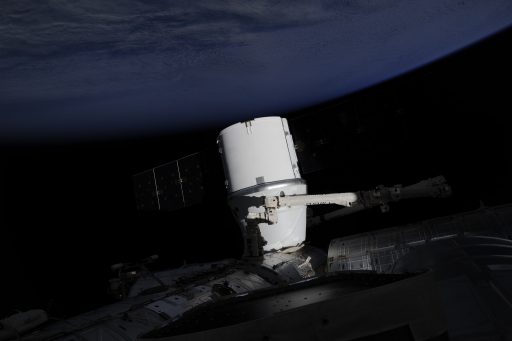
The Dragon SpX-9 spacecraft is set to make its return to Earth on Friday after a mission of over one month facilitating the delivery of critical items to the International Space Station.
Packed with scientific samples and Station hardware, Dragon will be unberthed in the early hours on Friday ahead of its release by the Station’s robotic arm at 10:10 UTC, allowing the spacecraft to drift away to a safe distance for a targeted deorbit burn that sets the stage for a parachute assisted splashdown in the Pacific Ocean at 15:47 UTC.
Dragon – loaded with 2,257 Kilograms of cargo – lifted off atop a Falcon 9 rocket in the early hours of July 18 and enjoyed a flawless ten-minute ride into orbit. While the Dragon took its first steps in Space, the Falcon 9 first stage flew to a successful on-shore landing at Cape Canaveral just a few Kilometers south of where it launched from.
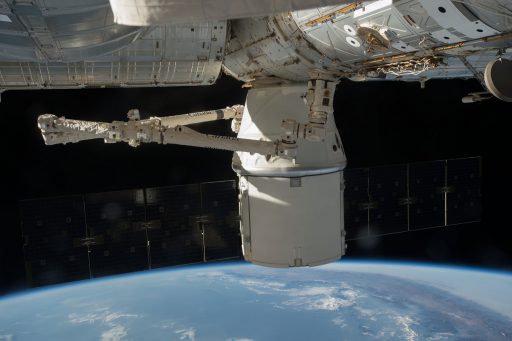
Over the course of two days, Dragon methodically raised its orbit to link up with the Space Station in its 400-Kilometer orbit. Approaching the complex from directly below, Dragon came to a halt just over ten meters away from the Station, within reach of Canadarm2 that was operated by Expedition 48 Commander Jeff Williams to capture the Dragon spacecraft.
Berthed to the Earth-facing port of the Harmony module, Dragon was opened for business later on July 20, giving the crew access to a packed cargo module loaded with 930 Kilograms of science equipment, 370kg of crew supplies and a new space suit.
Among the science cargo delivered by the Dragon was a group of 12 mice that took up residence aboard the Mouse Habitat installed in the Kibo module to live in the space environment for over a month. While mice have flown to ISS for previous studies, these were the first with a return ticket since the Mouse Habitat Architecture provides return capability. Returning from space, the mice and their offspring will be studied in detail to reveal effects of long-term space travel on the molecular level, including changes to gene expression and epigenetic modification over multiple generations.
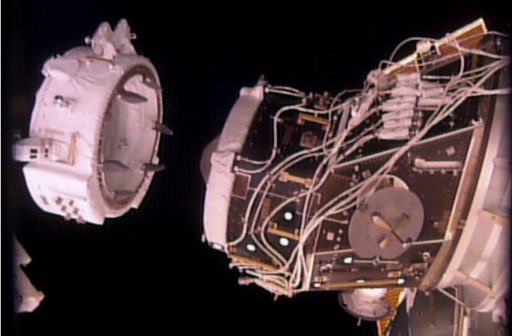
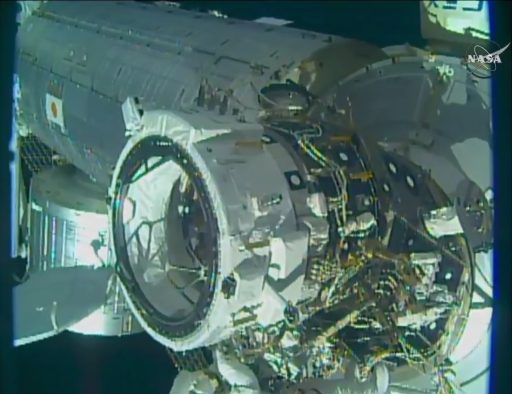
Also aboard Dragon was a new DNA sequencer that expands the Station’s scientific repertoire – no longer requiring samples to be returned to Earth. A technical demonstration flown on Dragon was a new type of heat exchanger that makes use of the phase change between solid and liquid media for potential use on future spacecraft. A pair of studies looked at the changes of bone and heart muscle cells in the space to improve health of future astronauts and people on Earth suffering from various conditions.
Dragon also transported small external payloads to ISS including commercial-of-the-shelf electronics and a new type of solar cell that can generate power even when not directly facing the sun.
But the main passenger of this mission was International Docking Adapter 2 – flown to the Station inside Dragon’s Trunk Section and installed last week. The 467-Kilogram adapter was pulled out from the Trunk by the Station’s Robotic Duo, Canadarm2 and Dextre, that placed it in direct contact with Pressurized Mating Adapter 2 so that spacewalkers Jeff Williams and Kate Rubins could structurally connect the adapter and install various electrical and data cables.
The successful installation of IDA-2 gave the Space Station its first fully operational docking port for Commercial Crew Vehicles that will start flying to ISS in 2017 and later take over crew traffic for the U.S. Segment of the Station.
Over the course of Dragon’s stay, the crew removed delivered items from the spacecraft, loaded the vehicle with over one metric ton of return cargo, and performed experiments that needed to be conducted in time for return aboard the vehicle.
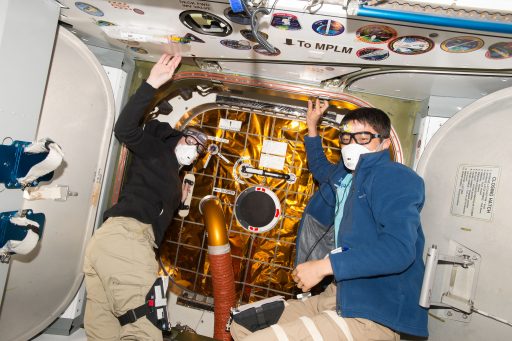
On Thursday morning, the crew placed the final cold stowage science items on the vehicle before beginning close out operations leading up to the closure of Dragon’s hatch. The crew will install a central cover in the hatchway and put in place four Control Panel Assemblies that will drive open 16 bolts holding the Dragon in place.
A single power jumper will be left in place overnight to deliver power from ISS to the Dragon before that too is removed Friday morning to clear the way for the closure of the Harmony hatch followed by a leak check.
With Canadarm2 grappled to Dragon, the crew will command bolts to drive Friday morning to structurally demate the spacecraft from the Node 2 module. Once Dragon is unberthed, the Robotic Arm – controlled from the ground – will be commanded to go through a series of pre-programmed maneuvers to slowly move the Dragon to its release position, ten meters from the modules of the Space Station.
The ISS crew will take over once Dragon is in the release position, starting with a set of reconfigurations of the Cupola Robotics Workstation. The Dragon itself will activate its navigation system and prepare for its Free Flight, also re-starting solar array rotation to track the sun and enter Free Drift with all thrusters disabled and the vehicle’s Navigation Instruments will undergo checkouts to make sure the craft is getting correct navigation data.
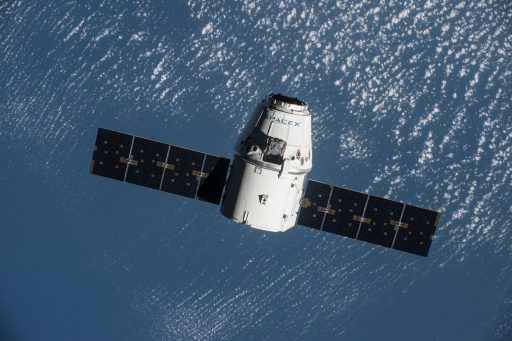
Receiving the GO from Mission Control Houston and MCC-X in California, the crew will get ready to ‘pull the trigger’ – that is initiating snares to open in the Latching End Effector of Canadarm2 to release the Flight Releasable Grapple Fixture on the Dragon. Release is timed for 10:10 UTC and Canadarm2 will retract from the spacecraft after orbital mechanics cause the spacecraft to clear the grapple fixture.
Dragon will recover from Free Drift and make a very small departure maneuver three minutes after release. Gently pulsing its thrusters, Dragon will initiate a slow opening rate, departing downward on the R-Bar. The second departure burn will occur just over 90 seconds later to accelerate Dragon’s R-Bar departure, enabling it to leave the ISS Keep Out Sphere.
On its traverse down the R-Bar, the spacecraft will make a 180-degree yaw maneuver to point its thrusters to the correct orientation for the third and largest departure maneuver that occurs about ten minutes after the first departure burn. This burn will set Dragon up to depart the vicinity of ISS, leaving the Approach Ellipsoid 18 minutes after release.
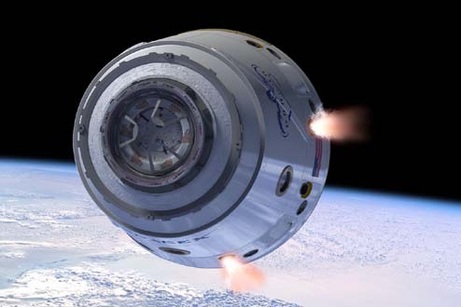
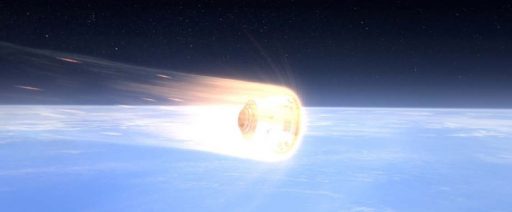
Departing the orbital outpost, the spacecraft will be on a path to increase its range to the complex to around 150 Kilometers over the course of the Free Flight. Once Dragon has departed ISS, NASA’s Mission Control Center in Houston will end integrated operations with Space-X Control in California with overall responsibility of the return solely in the hands of teams at MCC-X.
The vehicle will spend nearly five hours in Free Flight to set up for its deorbit burn that has been precisely calculated to allow Dragon to make an on-target landing. One of the critical events of the Free Flight is the closure of the GNC Bay Door to protect the navigation sensors inside from the harsh re-entry environment.
Dragon will begin firing its Draco thrusters at 14:56 UTC for a precisely targeted deorbit burn that will be nine to ten minutes in duration to slow the Dragon down by around 100 meters per second, placing it on a path to intercept the dense atmosphere at a location that allows Dragon’s Entry Guidance System to maneuver the craft to the desired chute deploy position. 16 minutes after the start of the deorbit burn, Dragon will jettison its trunk section containing the solar arrays to burn up in the atmosphere since it is not equipped with a thermal protection system.
Around 20 minutes after the conclusion of the Deorbit Burn, Dragon will begin re-entry, hitting the dense layers of the atmosphere.
During the Re-Entry Process, Dragon’s PICA-X Heat Shield has to withstand temperatures of up to 1,600°C. PICA-X is derived from NASA’s phenolic impregnated carbon ablator heat shield, also called PICA. This heat shield has a substantial flight heritage and the PICA-X version is expected to be re-usable many times without showing a high degree of degradation.
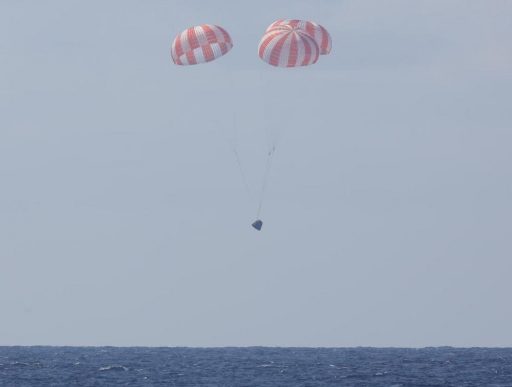
About 10 minutes before Splashdown, at an altitude of 13.7 Kilometers, Dragon opens its dual Drogue Chutes slowing the vehicle down for the opening of the three orange-and-white main chutes around three Kilometers in altitude. Flying under the Main Chutes, Dragon is slowed to its landing speed of 17 to 20 Kilometers per Hour.
Splashdown is expected at 15:47 UTC in the Pacific Ocean, 525 Kilometers west of Baja California where recovery forces will be awaiting the arrival of the vehicle. In previous cases, Dragon’s landing was very close to the bulls-eye target, allowing teams on the recovery ships to track a large portion of the vehicle’s descent under its three main parachutes. Critical cargo retrieved from Dragon will be shipped back to NASA within 48 hours of landing for post-flight analysis and distribution to the participating scientific institutions.

